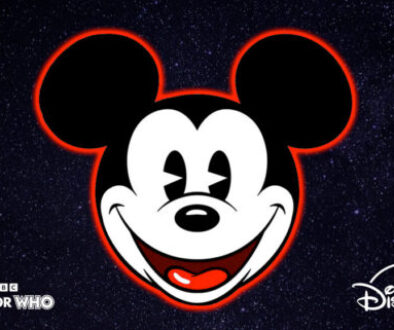Doctor Who – “Lux” Review – “And I Shine.”
Clint Schwalen gives his SPOILER-filled commentary on the second episode of Series 15.

Note: this review contains full SPOILERS for episode 2 of Series 15.
Anyone who has watched the entirety of Russell T Davies’ initial tenure as showrunner can attest that he is a master at paying off hints and clues left throughout his previous episodes. In “Lux,” Davies outdoes his previous work, weaving together character development, social commentary, and lingering plot threads to create something truly magical, his magnum opus. What sets “Lux” apart from Davies’ previous masterpiece—the trifecta that is Series 4’s “Turn Left,” “The Stolen Earth,” and “Journey’s End”—is that “Lux” accomplishes all of the above without relying on returning companions, the Daleks, a false regeneration, or the spectacle of a series finale.
A perfect example of how Davies interweaves plot points with character development can be seen as the Doctor first encounters Mr. Ring-a-Ding and deduces that the animated character isn’t celluloid but living light. In Davies’ first series as showrunner, the Ninth Doctor’s regeneration energy was portrayed as light emanating from within the Time Lord—a visual cue that has carried throughout the modern era—foreshadowing Lux’s attempt to use the Doctor’s regenerative light to build a body for himself and become fully realized. Davies’ script further likens Mr. Ring-a-Ding to the Time Lord as the former laments, “I’m all alone. Ain’t nobody else in this whole wide world like me,” recalling themes from Davies’ initial tenure as showrunner.
Despite revisiting the overarching Pantheon of Discord storyline, Davies never loses sight of the fact that, in an eight-episode series, it is Belinda’s storyline that must be constantly and efficiently developed. While her storyline doesn’t appear to be front-and-center per se, note how Belinda grows as a companion throughout “Lux.” As much as she wants to get home, she can’t resist the urge to experience 1952. She allows—if not encourages—the Doctor to help others, discovers what happened to the missing 15 townspeople and demands that Lux free them from their celluloid prison, and admonishes a police officer who is holding her at gunpoint. By the episode’s end, Belinda tearfully admits that she has grown to trust the Doctor completely, and her Doctor-like eye for detail is instrumental in defeating Lux. Further, note how Davies’ revelation that Belinda’s mother is an accomplished violinist pays off in the conclusion of the episode’s first act: it is Belinda who recognizes that Mr. Ring-a-Ding’s diegetic soundtrack is a violin melody.

Davies not only develops Belinda’s character, he also uses her to usurp the status quo of the series. As the Doctor and his new companion arrive in Miami, the local cinema’s marquee advertises the latest Rock Hudson picture, The Harvest Bringer. Belinda, aware of Hudson’s untimely death, sees a dark aspect of time travel. In real life, Rock Hudson was a notorious Hollywood heartthrob who was pressured into hiding his homosexuality. He died in 1985 from complications of AIDS, heroically revealing his HIV-positive status just weeks before his death. Hudson’s admission forced the public—including then-American President Ronald Reagan, whose refusal to even mention AIDS or take action to protect at-risk populations led to millions of deaths—to recognize the AIDS crisis. Where a native townsperson from 1952 would see a Rock Hudson marquee as a sign of an actor in his prime, Belinda sees it as a stark reminder of how societal intolerance played a part in exacerbating one of the greatest health crises of her time. Normally, time travel narratives portray characters seeing first-hand important turning points in history; here, Doctor Who shows the flip side and asks how a companion might approach a situation when she knows the tragic outcome. “This time travel thing is so strange, because we know what happens to him. Poor soul,” Belinda opines.
Contrast this with the following scene. Though she is not Black like the Doctor, because of Belinda’s Indian heritage, she is considered “colored” and subject to the egregious segregation laws of the time. Before she can be offended, the Doctor admonishes her to remain on task—they are here to investigate the disappearance of the 15 missing cinephiles. “How can you say that?” she asks, leading to one of the most beautiful lines in the series’ history:
The Doctor: “I have toppled worlds. Sometimes, I wait for people to topple their worlds.
Until then, I live in it, and I shine.”
Despite the changes in the cultural climate between 2025 and 1952—or in the series’ real-life viewing audience between the tenures of the Twelfth and Fifteenth Doctors—Doctor Who defiantly presents the Doctor as a reflection of mankind’s best attributes. The Doctor remains aspirational, regardless of his age, sex, sexual orientation, or skin color—a message reiterated as the missing Tommy Lee’s mother recalls the promise presented by the TARDIS:
Mrs. Lowenstein: “It says ‘police box.’”
The Doctor: “Does that give you hope?”
Mrs. Lowenstein: “It does, sir.”
The Doctor: “Well, let me tell you: hope can change the world.”

Davies uses the first act’s existential character study to illuminate his audience, but also to distract them from Mr. Ring-a-Ding’s true identity—a reveal that is stunningly perfect in its execution. Months of fan speculation—How could the Doctor encounter a cartoon? What has this silly show become?—are undone in one moment. If the Doctor can face the literal embodiment of games and of music and of death, the notion that light itself is a member of the Pantheon of Discord should come as little surprise. Yet, Davies’ emphasis on the very real trappings of time travel and on the character of the Doctor serves as such brilliant distraction that this moment comes as a completely unexpected, wonderful surprise.

Davies’ script for “Lux” has more surprises in store, as the Doctor and Belinda embark on a surrealist odyssey to return to their reality. Note that the entire sequence is bookended by classic examples of cartoon physics, the first of which sets up a double entendre: “I’m a two-dimensional character. You can’t expect backstory!”
The earlier inclusion of segregation within the narrative allows for a scene where Mrs. Lowenstein and a police officer confront the Doctor and Belinda. On first viewing, it seems reasonable that Mrs. Lowenstein, a woman from 1952, would question how a Black man could claim to be a “doctor”; however, on repeated viewings, the cartoonishly evil nature of the duo’s questions becomes obvious, brilliantly enhancing the surrealist nature of the Doctor and Belinda’s experience.


Despite his criticism, Davies’ goal is not to admonish his audience but to celebrate Doctor Who’s passionate fanbase. As the surreal interlude devolves into loving spoof, the showrunner makes the most of his opportunity for the Doctor to directly face his most ardent fans, here represented by three overly excited Whovians draped in cosplay and swag. Hilariously, the script acknowledges that the most beloved story from Davies’ initial run is “Blink”—an episode written by Davies’ successor, Steven Moffat—lambasting that episode’s simple premise with unblinking sarcasm: “Well, that sounds like an absolute epic.”
“God, you’re so annoying,” Davies-as-Belinda complains. “Lots of people say that,” Lizzie retorts, “We don’t care.” The Doctor, however, is aware of the truth: the trio, like any fans who define themselves by their love (or hatred) of a series, will lose their identities when that series ends. This notion carries significant weight, considering the concern that fan backlash may affect Disney’s decision to continue funding further series of Doctor Who. “Thanks, keep watching,” Belinda reminds the trio—an option that might not be possible for real-life viewers in the near future. Where Davies’ utilized the episode’s first act to display the titular Time Lord at his aspirational best, the showrunner uses this fourth-wall breaking opportunity to remind the audience of the magic Doctor Who brings to our world. “We had so much fun, and, thanks to you, I met my two best friends,” says Robyn, before Lizzie’s final remark: “Now, go and save the world, Doctor. We love you so much.”
Random Musings











(Time) Capsule Review
In “Lux,” showrunner Russell T Davies weaves together character development, social commentary, lingering plot threads, a surrealist interlude, and a perfectly executed surprise reveal to remind ardent fans of the importance of Doctor Who. “Lux” is Davies’ magnum opus and, like the Doctor, it truly shines.
P.S. For long-time readers who know me, the list is now: “Listen,” “Lux,” “It Takes You Away,” “Kerblam!,” “Cyberwoman,” “The End of the World,” and “An Unearthly Child.”
If you’d like to interact with the author of this article, follow him on BlueSky








